
 The writings of Paul tend to get a bad rap in progressive Christian circles. He gets the blame for the subjugation of women, the rejection of queer people and the affirmation of slavery. He is seen as a conservatising force, taking the early church away from the radical message of Jesus and turning that message into something more palatable to conservative Roman culture and thus enabling its spread. Some of that critique is certainly appropriate to the second century writings, such as the pastoral epistles of Timothy and Titus ascribed to Paul by much later writers. However, parts of Paul’s writings reveal a radical thinker, capable of reframing the reforming Judaism of his upbringing into an entirely new faith – a faith moreover informed by his own experiences of persecution and imprisonment. Today’s passage invites Paul’s readers to a number of fresh perspectives on God, creation, and the purpose of life, that continue to challenge our own thinking today. Let’s look at some of it a little more closely...
0 Comments
 Over the past few years at this service we have tried to focus on those who are presumed to have been present at the last supper of Jesus, but who are invisible in the written accounts – especially those who were not male or in any kind of authority. In a city like Sydney, where the presence of women and sexually and gender diverse people in church leadership is questioned in many quarters, it seems important on this night to say, ‘we were there too’. With this is mind, I looked for images of women at the Last Supper and came upon this one by Jamie Beck. I know too little about her, but Google suggests she is an American photographer and author of the 2022 book An American In Provence. She worked in New York for various prestigious fashion houses before moving to France. During COVID with her husband Kevin Burg she created a series called Isolation Creation sharing one photo per day of the lockdown experience, creating something beautiful positive each day. They were sold with proceeds going to the Foundation for Contemporary Arts COVID19 Emergency Grants Fund...  image from Museums Victoria on Unsplash image from Museums Victoria on Unsplash What do we make of the serpent of bronze on a pole which we hear about in today’s first reading? And what do we make of Jesus, pictured similarly symbolically in John’s Gospel, as a kind of snake, lifted up on a wooden pole? What do we make of the challenging stories of sin and salvation in our readings this morning?... 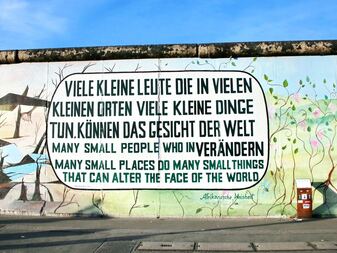 photo by Mark Konig on Unsplash photo by Mark Konig on Unsplash Jeanne d’Arc, the Suffragettes, Mahatma Gandhi, Rosa Parks, the Tent Embassy, Mardi Gras ‘78ers, Tiananmen Square protestors, Peter Tatchell, Bob Brown, the Occupy movement: what do these people have in common?... Would we consider that some, at least, of them have been prophets, or prophetic, in their words and actions? I think there is a case, on at least three grounds: firstly, because they have been typically disturbing to many, and certainly controversial; secondly, because, at the heart of their actions has been a claiming, and transforming, of space reserved, essentially as sacred, by others; and, thirdly, because they ask us to consider what is really true. This is also at the heart of today’s readings, which ask us to reflect on who, and what, is truly prophetic. But let us add some more people into this. How about those who refused to keep to government rules about gathering together and living appropriately during the COVID-19 lockdowns, or the invaders of the Capitol buildings in Washington on 6 January 2021, or the Christian Lives Matters folks who attacked us and others last year? Are they, in their own way, also prophets, or prophetic? After all, they too are typically controversial and disturbing. They also claim and seek to transform spaces which have been defined by others in different ways. And they too ask us to consider what is truly prophetic. For are we just consecrating our particular cultural and political preferences when we say some people or things are prophetic? Or is there something more to it?... 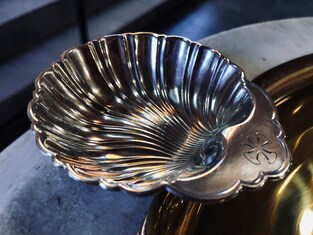 image by Josh Eckstein on Unsplash image by Josh Eckstein on Unsplash Some of you may have noticed a change to our worship space today. The baby has gone – transformed it seems into a scallop shell. I am passing it around among you as I speak and I invite you to hold it for a few moments if you wish... ...Now, what strange alchemy is this, you may ask? What does this signify? We’ll come back to that. For now, just be aware that we are being subtly, and not so subtly, redirected, from the outer to the inner; from the seen to the unseen; from creation to re-creation; from the incarnation to the resurrection. This is a theological progression that demands that we go back to the beginning – to the creation of light in the story of Genesis as we heard, and to the beginning of the gospel as the author of Mark proclaims it just a couple of verses earlier than today’s text, ‘the beginning of the good news of Jesus Christ, the Son of God’... 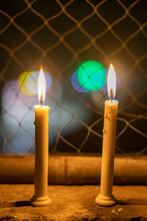 image by Ehteshamul Haque Adit on Unsplash image by Ehteshamul Haque Adit on Unsplash Do you know the allegorical image known as 'The Vinegar Tasters'? It is related to Eastern philosophies and may be helpful to reflect upon as we end one calendar year and begin another, particularly as today’s Gospel reading offers us symbols brought to the Christ child from the East. For which gifts are we to offer at this time? What pathways are we seeking to tread into the future?...  an image from WORD MADE FLESH exhibition by Paul Yore at the Australian Centre for Contemporary Art in Melbourne an image from WORD MADE FLESH exhibition by Paul Yore at the Australian Centre for Contemporary Art in Melbourne One of the most memorable set of Christmas services I helped arrange involved what I was brought up to call a dustbin, though others call it by other names, including (as in the USA) a trash can. This garbage icon was placed at the crossing point of the nave of St Luke, Toowoomba. For that church building is very much like a cathedral in design, so that it was unmissable, and full and centre throughout worship. Indeed, at Midnight Mass, the choir had to part to walk around it in their processions, and everyone coming up for, and returning from, communion. The dustbin/trash can lid was also put upside down on the top of the bin, so that a figure representing the Christ child could be placed upon it. The point was not to undermine the beauty of other aspects of worship or of Christmas – for, as you may have gathered by now, despite the many virtues of the Congregationalist tradition which established this building, I am definitely not a Puritan when it comes to Christmas worship! For one thing, I am too queer a person not to revel in the extraordinary queer elements of Christmas. Rather, the point of the dustbin was to recall us to the heart of the Incarnation of Christ, to where all the beauty and the joy and the utter transformative power of this season arises. Like the great queer poet and playwright Oscar Wilde, I believe profoundly that, in so many ways, in our struggles and human troubles, ‘we are all are in the gutter, but’, as he put it, and this is the queerness and liberation of Christ-centred faith, ‘some of us are looking at the stars.’ Christmas is indeed about looking at the stars, and covering ourselves again with stardust, and all kinds of glitter – for, truly, we too are stardust, made of stardust, and we are meant to glitter. For the Word is indeed made flesh, formed, and re-formed, out of junk…  I imagine many of us know the old Gospel campfire and children’s song ‘I’ve Got That Joy, Joy, Joy, Down in My Heart.’ The tune itself is upbeat, catchy, and hard to forget. We might even try singing it now, perhaps responsorially: I’ve got that joy, joy, joy, down in my heart Where? - Down in my heart? Where? - Down in my heart to stay. The song has other verses too, including having ‘the peace that passes understanding’. One version also has one verse about dealing with spiritual distress. It goes like this: If the devil doesn’t like it, they can sit on a tack Ouch! - Sit on a tack Ouch! - Sit on a tack today Of course, the song is hardly great poetry. It does however reflect the great spiritual gift of Joy which we celebrate today, and which is central both to Mary and the story of Jesus’ birth, and to the spiritual life as a whole… 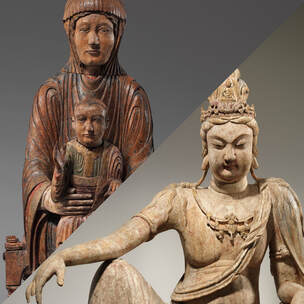 Enthroned Virgin and Child (1150-1200 France) & Bodhisattva Avalokiteshvara in Water Moon Form/Shuivue Guanyin (907-1125 Liao dynasty) from the Metropolitan Museum of Art, New York Enthroned Virgin and Child (1150-1200 France) & Bodhisattva Avalokiteshvara in Water Moon Form/Shuivue Guanyin (907-1125 Liao dynasty) from the Metropolitan Museum of Art, New York Wake up! Keep awake! These are familiar injunctions in Advent. What however do they mean to us today? What are we to wake up to? And for what is it that we are to keep awake? At the heart of the Advent and Christmas mysteries, is a call to transformation: an invitation to awaken, to recognise what is really going on in ourselves and in the wider world; an invitation to respond, to wake up, to the divine possibilities latent, or birthing, within us. Whether it be through stories and images of wonder and imagination, as in the Christmas angels and the Magi, or in today’s Gospel challenge to see beneath the changes and chances of our immediate existence, we are invited into transformation: the ever-transforming power of divine love and awakening… 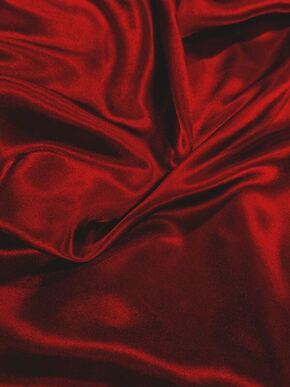 image: Monty Lov on Unsplash image: Monty Lov on Unsplash Last year SBS Insight told some of the diverse personal stories of faith, loss of faith, and changing faith, in contemporary Australia. One was of a young Croatian Australian woman who has committed her life to God through a faithful adherence to Islam, including covering her head and body in conservative traditional dress. In this she has found a profound sense of peace and flourishing. Some significant resistance has however come her way. She experiences some of the continuing Islamophobia within our society, and, in addition, strong extra kickback from some white Australians, not least fellow Croatians. For what, some would say, is a nice, white, western, and well educated, young woman doing taking up such a religious path? Is this not also, some would say, a betrayal of her family, and culture, too? After all, religiously speaking Croatians are almost exclusively Christian, and in particular Catholic. What on earth is this young woman doing? What is happening here? We might say something similar of the stories in our lectionary this morning, each of which involves a breaking with powerful expectations, and a profound response to needs of salvation which are simply not met by conventional culture or practice. Abraham, Sarah, Matthew, the synagogue official, and, not least, the hemorrhaging woman: each challenge us. They invite us to reflect upon what is bleeding in our own lives, hearts and souls, and invite us to reach our in faith ourselves. For what are our needs that require transformation? What salvation do we seek? What of God is calling to us?... |
Authors
sermons and reflections from Penny Jones & Josephine Inkpin, a same gender married Anglican clergy couple serving with the Uniting Church in Sydney Archives
June 2024
Categories
All
|
 RSS Feed
RSS Feed